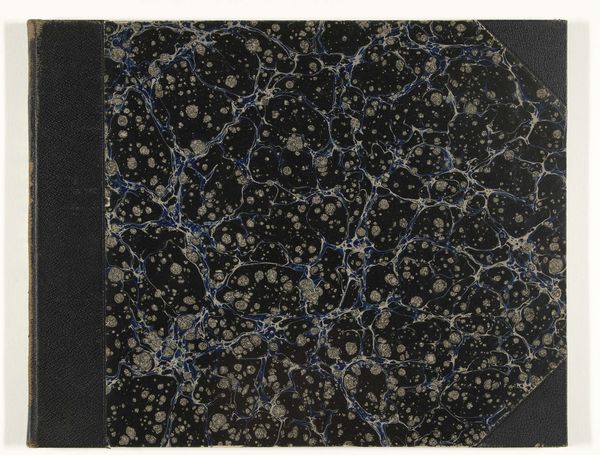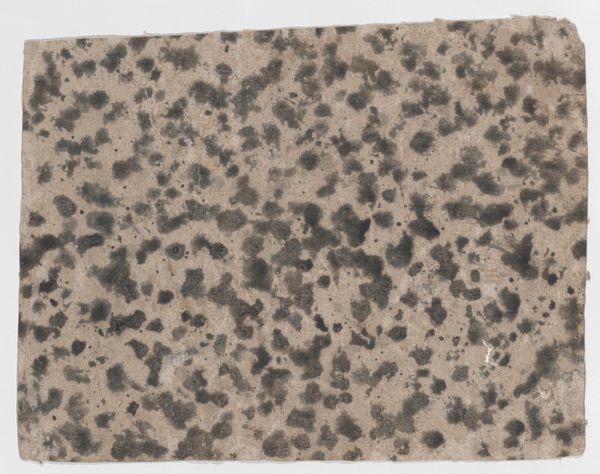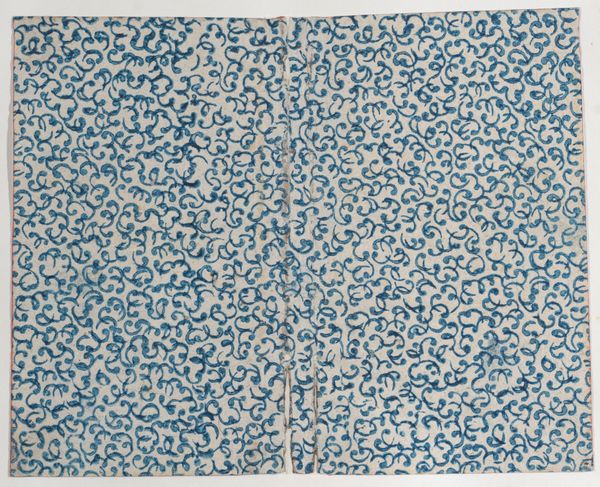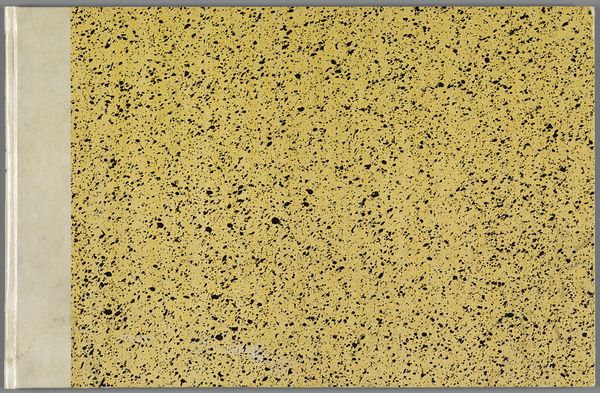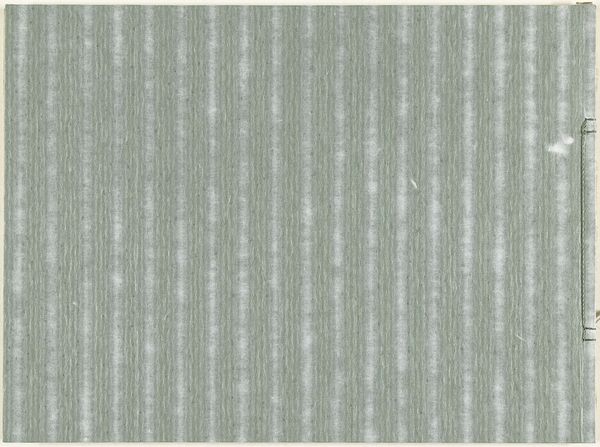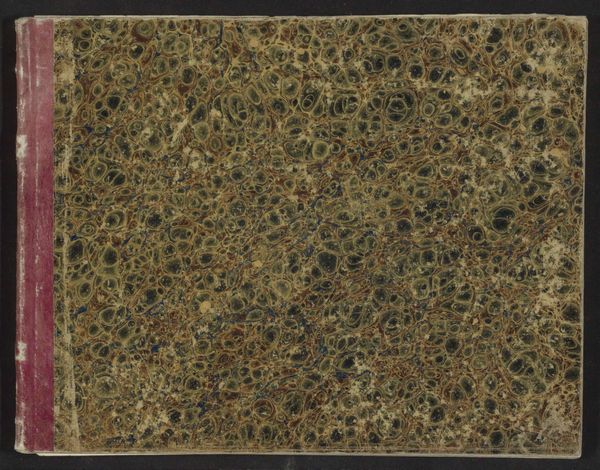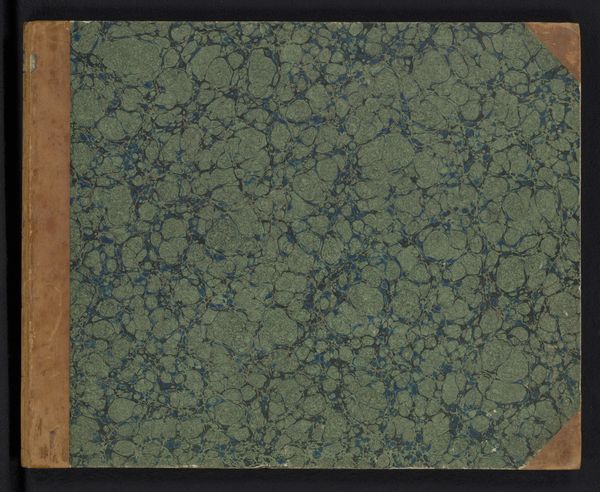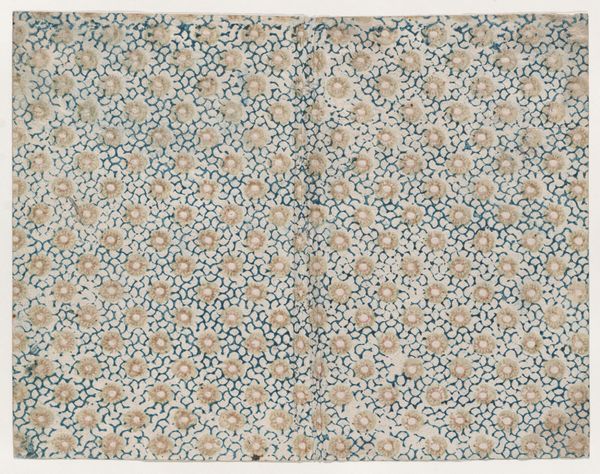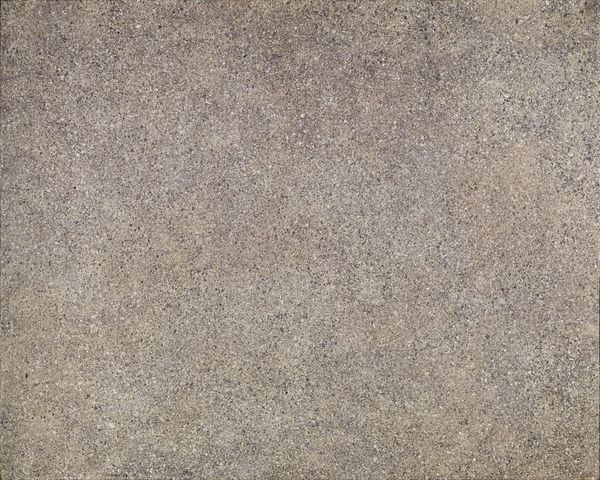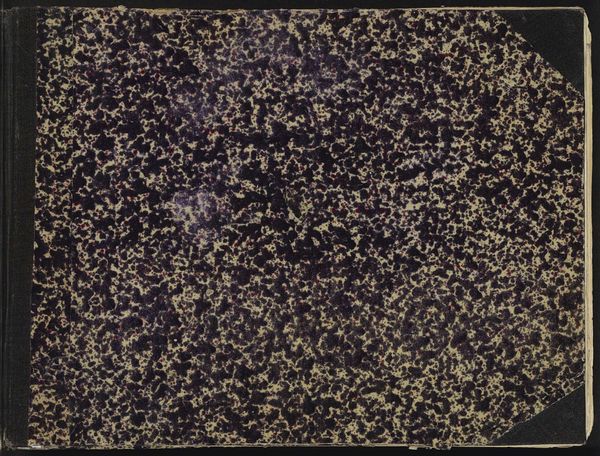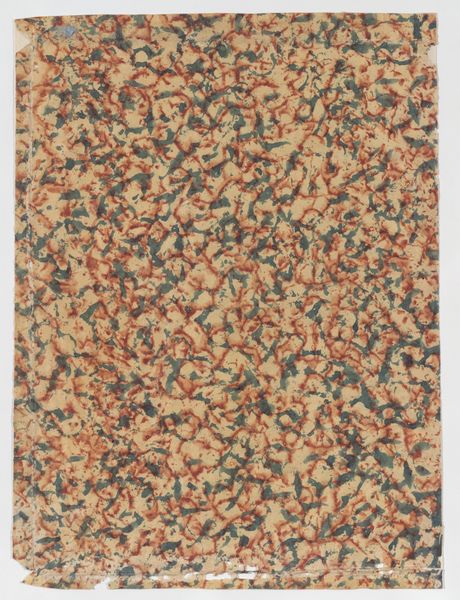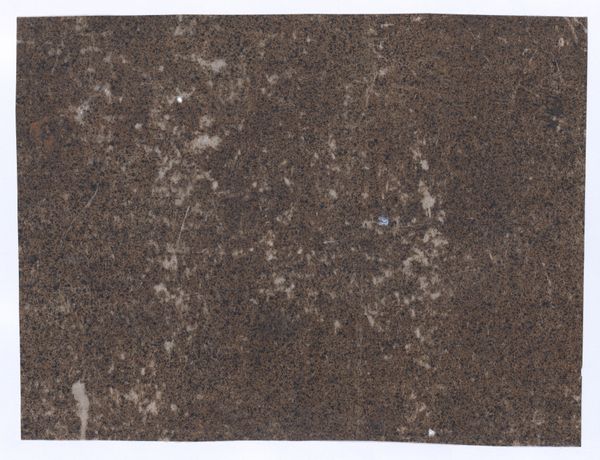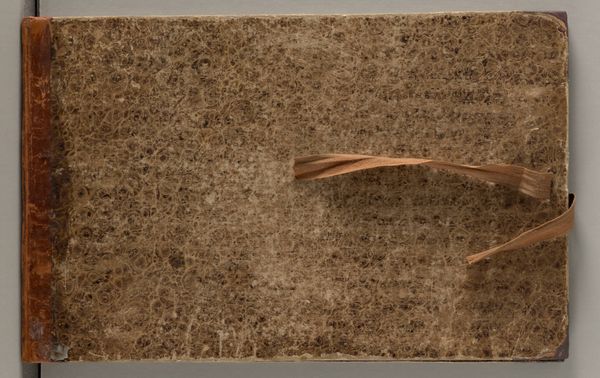
drawing, paper, ink
#
drawing
#
natural stone pattern
#
pattern used
#
asian-art
#
japan
#
paper
#
ink
#
repetitive shape and pattern
#
minimal pattern
#
repetition of pattern
#
intricate pattern
#
regular pattern
#
pattern repetition
#
layered pattern
#
combined pattern
#
calligraphy
Dimensions: 8 × 18 5/8 in. (20.32 × 47.31 cm) (sheet, fan)12 1/2 × 21 7/8 in. (31.75 × 55.56 cm) (mount)
Copyright: Public Domain
Curator: Right now, we’re looking at “Poem,” a late 19th to early 20th-century artwork by Ichikawa Tokuan. This piece, currently residing at the Minneapolis Institute of Art, employs ink on paper, presenting itself in a distinct fan shape. What are your first thoughts on it? Editor: It’s quite delicate, almost like looking at a whisper made visible. The subtle gradations in the stippled background and the brushstrokes seem to evoke a sense of ephemeral beauty and quiet contemplation. It looks like the artist applied tiny controlled touches of ink to the page. Curator: The creation of works like this fan, along with associated practices of calligraphy, poetry and tea, speaks to a particular moment in Japanese history, one of increasing access to the arts across social classes. This period also reflects shifts in patronage, away from solely elite or religious circles, to a burgeoning merchant class and their tastes. Editor: I wonder about the choice to present it on a fan. There's an inherent performative aspect—fans are meant to be seen and used. How might this impact its reading and meaning? Was it meant to communicate something about the wielder's knowledge or status? Curator: Exactly. The fan itself as a portable surface brings the artwork directly into social interaction, it encourages engagement. The text becomes less about isolated reflection and more about embodying culture, revealing the owners taste through a shared understanding of artistic symbolism. Editor: Thinking about it within a historical and cultural framework, is it meant to evoke harmony or perhaps a critical commentary? There is a complexity within what seems simple, almost minimal. The choice of imagery, language and pattern must have been layered with encoded meanings. Curator: Considering the potential circulation within these merchant and increasingly cosmopolitan circles of Japan, "Poem" might have served not only as an emblem of status but as a complex, visual statement in which traditional Japanese ideals were expressed within a society experiencing modernization. Editor: That’s a compelling thought, this object simultaneously embracing heritage while looking to the future. This interpretation enriches how we understand the artwork’s presence, emphasizing not only aesthetics but also how visual and social registers interconnect. Curator: It certainly adds a new perspective, a challenge to perceive not just art on the wall, but culture on the move. Editor: Precisely! "Poem," it seems, becomes a nuanced statement about history, and aspiration expressed within ink strokes.
Comments
No comments
Be the first to comment and join the conversation on the ultimate creative platform.
